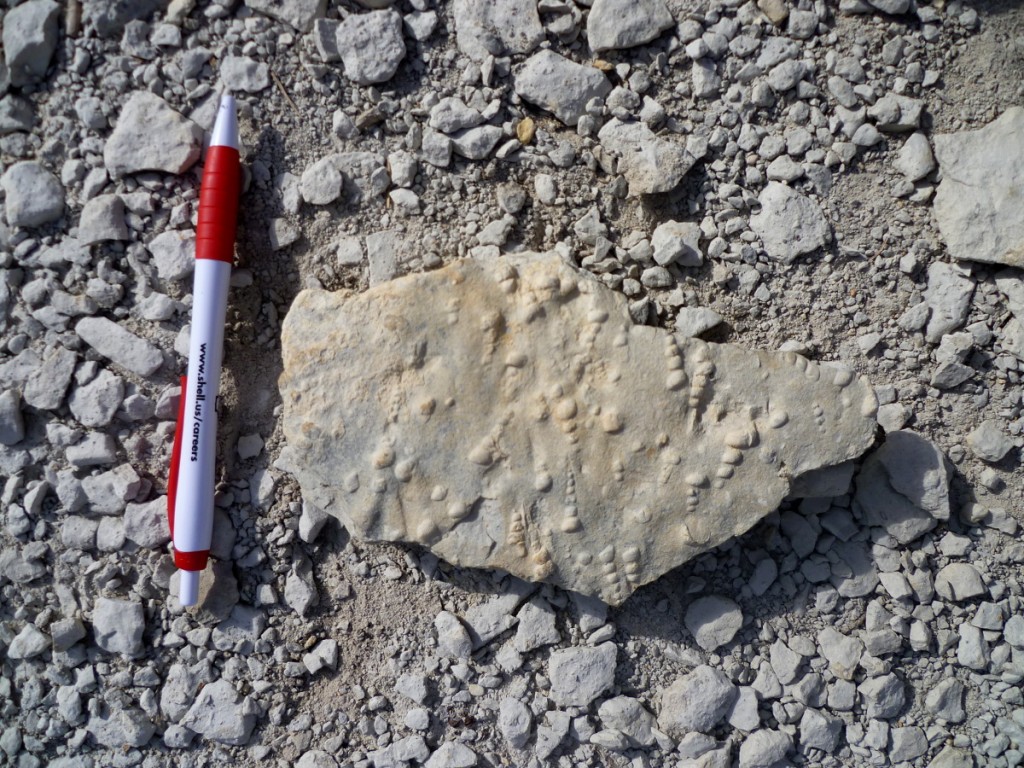What can we learn from a hand sample?
Sometimes a geologist may question the value of a hand sample when compared to an entire outcrop or entire section, but there is absolutely value in hand sample that cannot be gleaned from outcrop scale analysis. For example take a look at the following hand sample:
When I look at a hand sample the first thing I think about is what type of rock is this? Well this rock is obviously a sedimentary rock (it’s a limestone to be precise). How do I know this? Well for one, the grains, but also because of the obvious fossils! It would then be good to think about depositional environment.
Aside from using grain size as a proxy for depositional environment, we can use the fossilized gastropods as a proxy. The fossils tell us that the deposition must have been a shallow marine environment, because that is the environment in which gastropods live and lived!
Looking a bit deeper, you may notice that the orientation of the gastropods seems to be parallel, but not unidirectional. What does multidirectional flow in a shallow marine environment mean? Well, intertidal/peritidal of course! If one were to perform a statistical analysis on a larger sample of these fossils, you may be able to glean the relative strength of tidal currents, or perhaps any oblique nature to the margin.
Pretty cool to see all you can learn from just a single hand sample. Combine this level of scrutiny with an entire outcrop or section, and it is astounding the level of detail on depositional environments that can be learned.
This sample is from the Lower Middle Glen Rose Fm in Central TX, at the Canyon Lake Gorge. The entire section exposed here is described in great detail by Ward and Ward, 2007; citation below.
William C. Ward and W. Bruce Ward. Stratigraphy of Middle Part of Glen Rose Formation (Lower Albian), Canyon Lake Gorge, Central Texas, U.S.A. In Cretaceous Rudists and Carbonate Platforms: Environmental Feedback, volume 87, pages 193–210. SEPM (Society for Sedimentary Geology), 2007. doi: 10.2110/pec.07.87.0193.

